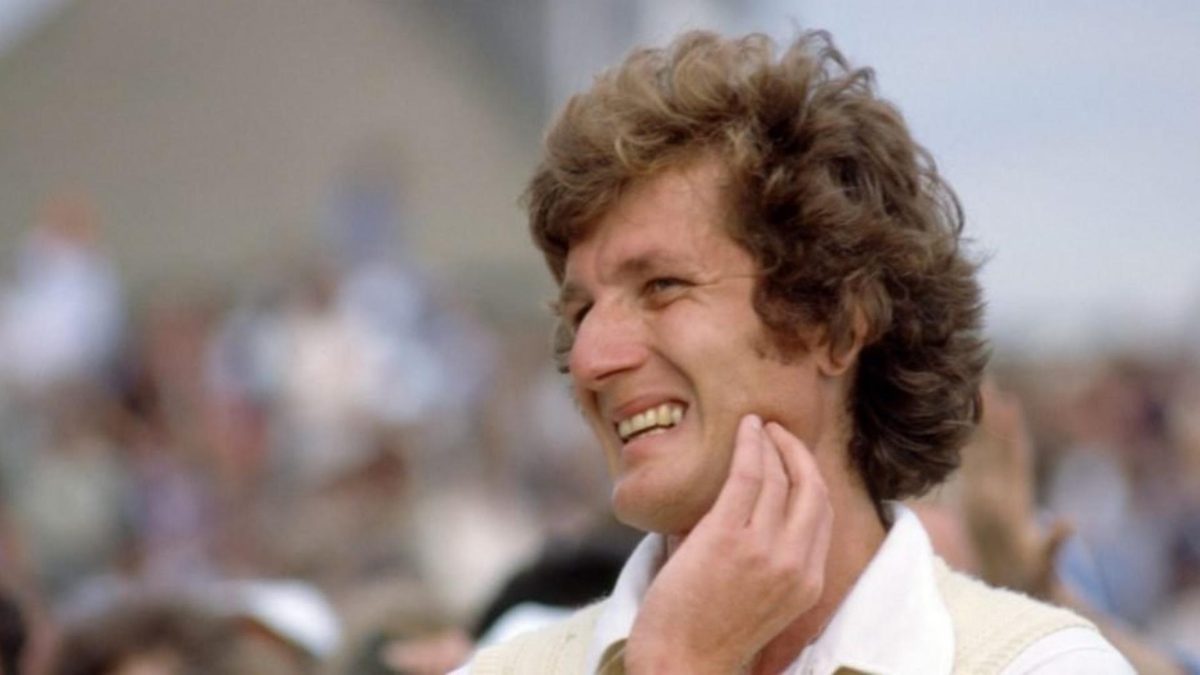
James Mettyear chronicles the time when Bob Willis, Sunderland’s finest, made a nation forget its impending doom, even if only for a moment, in one of the greatest heists in Test history.
This piece is adapted from a chapeter on Willis’ spell contributed by James Mettyear to Supreme Bowling
Bob Willis – 15.1-3-43-8
England v Australia, Leeds, 16-21 July, 1981
Desolation Row
Things were bad in 1981. The western world was forced out of joint, as Ronald Reagan and Margaret Thatcher hit their stride in the dismantling of post-war social democratic collectivism to unleash a new age of unfettered individualism to produce the trickle down’ riches that most of us are still waiting for today. In Britain, Thatcher’s slashing of public spending when she had come to power in 1979 had curbed inflation, but by the beginning of the year, company profits had fallen by 20 per cent, manufacturing output by 15 per cent, and unemployment had almost doubled, the biggest leap since the Great Depression.
Two-and-a-half million were without work, with a further 6,000 joining the dole queue every day. I was one of them, and so had plenty of time to shake my head in bemusement at the nation’s obsession with the impending wedding of Prince Charles and Lady Diana (we should have been “painting their passports brown”); to be nervously heartened by the Brixton rioters; to struggle to come to terms with Bob Dylan’s apparent conversion to born again evangelism, and to watch the cricket.
It’s All Over Now, Baby Blue.
For the cricket lover of the time, there was exhilaration to be had from the brutal brilliance of the West Indians, their rise expertly conceived and planned by Clive Lloyd (the one who helped advertise the Guardian newspaper, not the one who would later stand on a platform with the Iron Lady), but for the England follower, particularly one laid low by what, as Fred Trueman would say, was “going off out there” in the wider world– there was little solace to be drawn from the home team in early July 1981.
Having lost the previous summer’s home series to West Indies, and then more emphatically the away leg over the winter that followed, England began the Ashes summer by losing at Trent Bridge. The second game at Lord’s saw the members’ enclosure (‘in their coats and their ties’) greet Botham’s dismissal for his second duck of the game (first ball, bowled around his legs, sweeping at Ray Bright) with a silence as callous as that shown by the architects of the new conservatism toward the jobless, or William Zanzinger to the lonesome death of Hattie Carroll.
“As I came back towards the pavilion gate, not a soul among the Lord’s members mumbled ‘bad luck’, and not a single MCC member looked me in the eye”, he later wrote. “I’d already made up my mind to quit the captaincy if the selectors were going to prolong my match-by-match examination. If my mind hadn’t been made up, I’m sure the attitude of the MCC members that day would have made it up for me.”
‘Botham Out’ had read the Evening Standard headline before the game, and by the end of it, he was; jumping before pushed, as Alec Bedser, chairman of selectors, confirmed it with indecent haste. And as mass rioting spread from Toxteth to Moss Side, the carpet of press opinion was moving under the young all-rounder to the point where even his place in the side appeared in jeopardy.
And then there were Bob Willis’ knees.
Mixed-up Confusion
The first I heard of Bob Willis was when the gangling 21-year-old was rushed out to Australia to join the MCC touring team for the 1970-71 Ashes, following Alan Ward’s injury. I was a little conflicted by the news, as I had heard he was lightning fast and was concerned that he might be quicker than my hero, John Snow.
While he might have been as fast, I was soon reassured that he wasn’t, at least then, as good, and when he was the sole England player to run to Snow’s aid when the latter was grabbed by a spectator and pelted with beer cans at Sydney (as Bill O’Reilly wrote in the Sydney Herald the next day: “What did Willis think he could do to help – he looks like a two-iron with ears!”), I decided that I liked him.
I liked the fact that his chest on action culminated, less like Dylan’s Frankie Lee, ‘in a soulful, bounding leap’ but in a flailing whirr at the end of a ludicrously long, curving run-up, knees pumping as his right arm thrashed away like a jockey flogging a wounded camel (the description later provided by his mate Botham), or, as Graham Gooch described it, “like a gander trying to get airborne off a runway”.
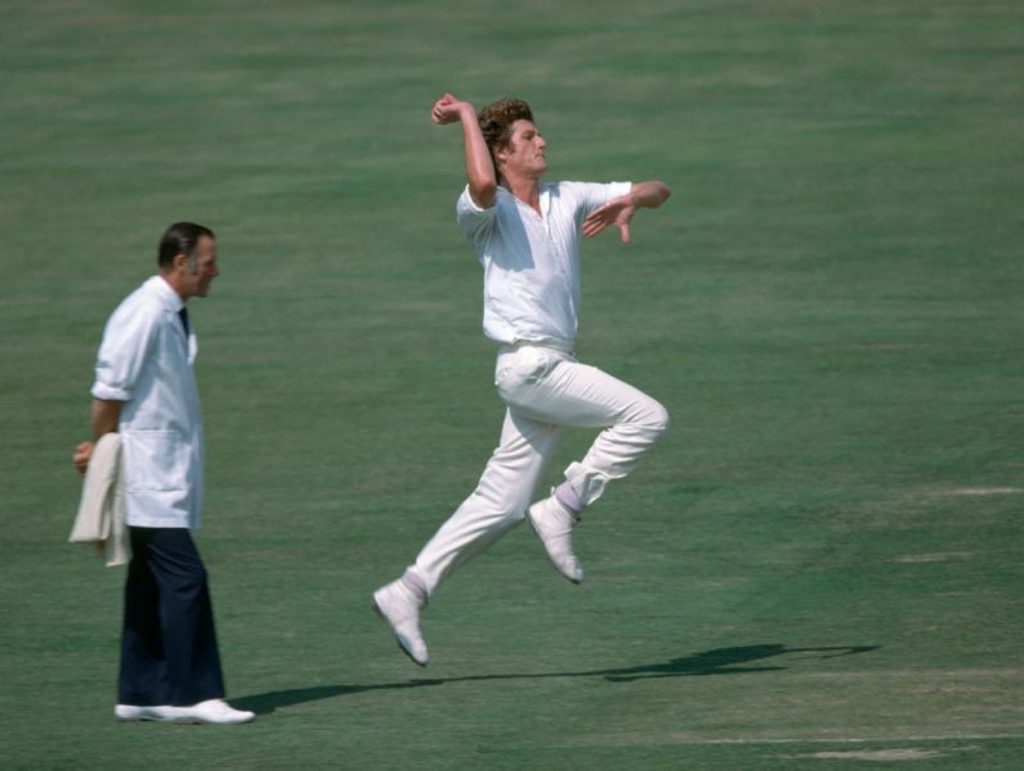 “I liked the fact that his chest on action culminated, less like Dylan’s Frankie Lee, ‘in a soulful, bounding leap’ but in a flailing whir at the end of a ludicrously long, curving run-up”
“I liked the fact that his chest on action culminated, less like Dylan’s Frankie Lee, ‘in a soulful, bounding leap’ but in a flailing whir at the end of a ludicrously long, curving run-up”
I liked the fact that he’d played endless mini-Tests in the garden with his brother as a young boy, and kept tally in a proper scorebook. I liked the fact that he was fast, and that his hair made him look, if not necessarily a rebel, then at least like someone who knew his own mind and had the courage to follow it; this impression was given substance when, at the end of the 1971 season, having failed to be given a cap at The Oval, he left Surrey without a job to go to and signed on the dole. And a little later, I discovered that the D in RGD Willis stood for Dylan, and that he’d added it by deed poll, aged 12. Then I liked him even more.
Temporary Like Achilles
And over the coming years, my approbation grew (I didn’t find out about how close he’d got to joining Boycott’s 1982 rebel tour until much later).
By the late 1970s, Bob Willis had become England’s leading fast bowler. His action may not have pleased the aesthete, but he was mighty effective. At a pace only a little below that of Lillee, Thomson and Holding, his prodigious height and the venom with which he whipped his bowling arm down diagonally across his body at the end of his action gave him both steep bounce and sharp movement into the batsman, as Rick McCosker, his jaw broken at Melbourne, and Iqbal Qasim, hit in the mouth at Edgbaston six months later, would doubtless attest.
Between 1976 and 1979, Willis proved to be a force on all surfaces. Even during this peak period, though, he repeatedly found himself battling through injury or illness. Tony Greig and Ken Barrington had persuaded him to abandon his somewhat circuitous route to the wicket and adopt a more direct approach, and Graham Gooch’s mimicry led him to try and still the flapping arm, but bowling still never looked easy for ‘Goose’. There was a fragility about him. Six-feet-four-inches at age 16, and nearer six-foot-six by maturity, the strain on his knees in particular was often crippling.
On the 1974-75 Ashes series Down Under, the drugs and the 10 injections he’d relied on to get him onto the pitch were no longer enough and he was forced to return home to undergo major surgery on both knees. While in hospital, he suffered a blood clot, and until the middle of that season, he was on crutches.
The fragility was not just physical. He’d suffered from debilitating insomnia since his debut Test tour, and while the strength to keep coming back from one setback or another revealed great mental toughness, it appeared to be a toughness based on moral fibre rather than the innate self-confidence of the likes of Botham. As Mike Brearley wrote in The Art of Captaincy: “Willis is more easily deflated than I for one had appreciated. I was slow to realise that the ribbing he received in 1979-80…was getting him down and even hindering his performance.”
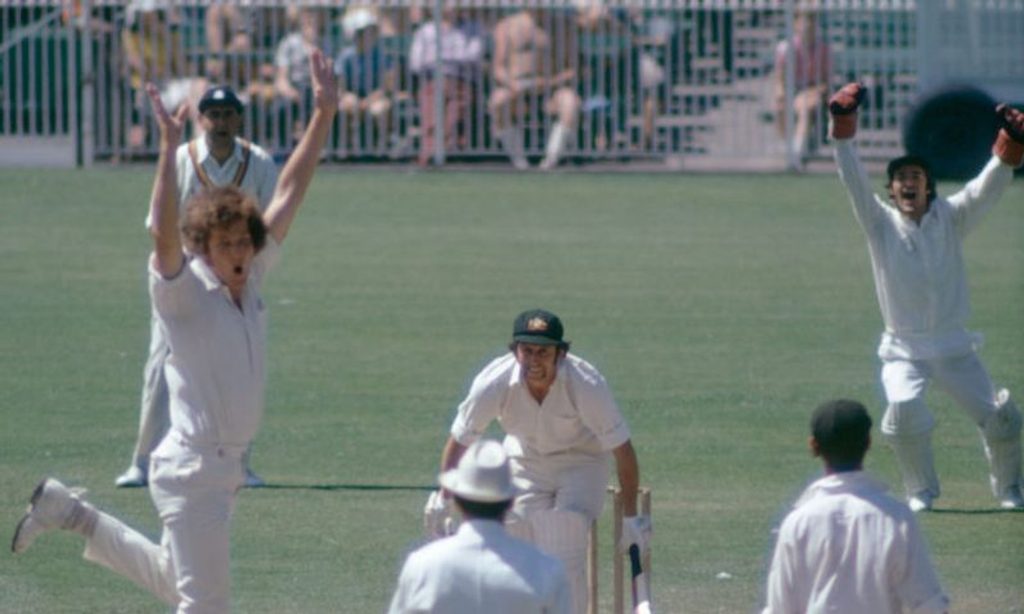 Bob Willis belts out an appeal during the 1974/75 Ashes
Bob Willis belts out an appeal during the 1974/75 Ashes
The hollowed cheeks, the catatonic gaze; the way in which, as Brearley described it: “Willis always shut himself up into a cocoon of concentration and fury,” were the means not just to keep him ‘singing through these tears’, but perhaps to suspend disbelief. As he wrote in his 1985 autobiography, Lasting the Pace: “I cannot say I ever actually enjoyed Test cricket. I was never able to relax.”
Whatever the doubts, though, whatever the pain, the man Ian Botham called “a tremendous trier, a great team-man and an inspiration” simply never gave up. Willpower and courage underpinned him, together with a self-disciplined regime of long-distance slow running, suggested by an Australian physician. And the openness to explore hypnotherapy to help the insomnia. As Mike Brearley said: “The two men whose careers have been most miraculously revived and extended by dedication to hard work are Lillee and Willis.”
Despite the hard work, though, the injuries kept coming, and on the 1980 winter tour of the West Indies, he broke down again and was forced to return home before the first Test to have frayed cartilage scraped out of his left knee; the press, not for the first time, consigned him to the knacker’s yard. Even John Woodcock in The Times castigated the selectors, who had taken him to the Caribbean in the first place: “The selectors can never have seriously thought that Willis was still up to it as a bowler or that his fitness was worth the risk.”
Stuck Inside of Mobile with those Memphis Blues Again
And it was indeed very nearly the end for Willis as the third Test at Headingley approached. Mike Brearley, him with the ‘degree in people’, was rung by Alec Bedser from the pub (he reversed the charges) on the evening after the Lord’s game and coaxed out of retirement to take on the captaincy. His first pronouncement was to confirm he wanted Botham in the side. He was much less sure about Willis.
Bob had returned for the first two Tests of the summer, bowling well enough to take 4-75 from 43 overs at Trent Bridge, and 4-85 from 39.4 at Lord’s, where he also sent down 28 no-balls. He then contracted a chest infection, sat out Warwickshire’s next county match at The Oval and, according to England physiotherapist Bernard Thomas, would not be fit to resume training until 48 hours before the Leeds Test. The decision was made to leave him out of the 12-man squad in the hope that he would be fit for the fourth Test at Edgbaston. Bedser was given the unenviable task of breaking the news. ‘Not dark yet, but it’s gettin’ there’.
Let Me Die in my Footsteps
As Willis tells it: “The selectors had apparently assumed, without consulting me, that I was unlikely to make a complete recovery by Thursday. Although it took me some time to convince Alec that I had little doubt about my fitness for the game, I effectively talked my way back into the team. Alec phoned the other selectors, Mike Hendrick’s invitation to play was intercepted before it could reach him, and the name of Willis was among those read out to the waiting world on the midday news the following day.”
He still almost missed out. On the eve of the match, Brearley leant towards playing a spinner, John Emburey, at the expense of one of the seamers. If he had gone with this hunch, while his vice-captain may not have known it, it would have been Willis himself rather than Old, Dilley, or Botham who would have been dropped.
Too Much of Nothing
Lowering skies and rain (the first in three weeks in Leeds) met the first morning of the third Test. Kim Hughes won the toss on what looked like a bowling day, and there followed a 10-minute hiatus while the young Australia captain summoned Rod Marsh and Dennis Lillee for a last look at the pitch. Boycott and Gooch began to pad up with little enthusiasm, but when Hughes at last delivered his verdict, he surprised them by deciding to bat. Australia finished a rain-interrupted day, described as ‘thoroughly mundane’ by Christopher Martin-Jenkins, on 203-3 off 82 overs, with Dyson, dropped earlier by Botham on 57, yorked by Dilley for 102 just before the close.
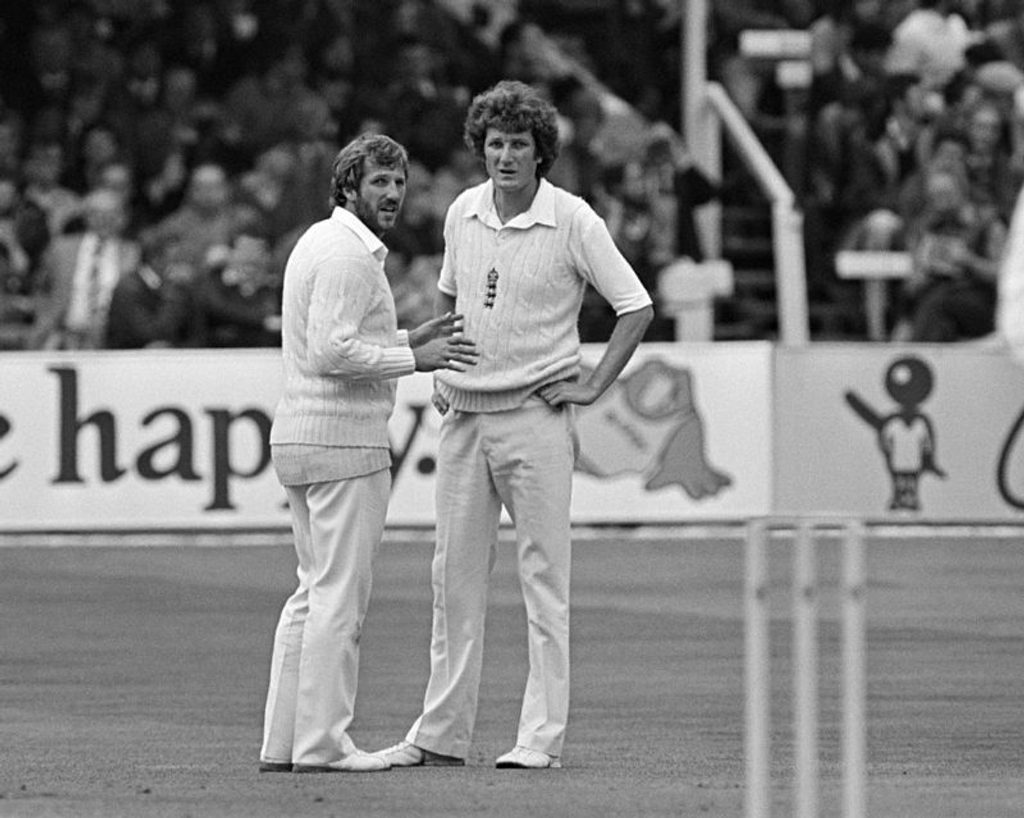 Bob Willis went wicketless in the first innings of the epic Headingley Test of 1981.
Bob Willis went wicketless in the first innings of the epic Headingley Test of 1981.
On day two, the weather continued in similarly gloomy vein, as the tourists reached 401-9 before declaring. The England bowling was inconsistent. Dilley, urged by the crowd to “bowl at t’fuckin’ stumps”, very rarely did so, and Willis and Old were similarly too wide of off to consistently threaten. Three catches went down, two of them by Botham.
One glimmer, though – the tarnished golden boy appeared to have recaptured some of his bowling lustre, taking his first five-wicket haul in more than a year. Willis bowled tidily enough, but finished with a blank in the wickets column: 30-8-70-0, figures commensurate with his new role as spear-carrier. As Brearley wrote later: “His role in the attack had gradually, and without explicit recognition, changed from that of the front-line strike bowler to being – partially at least – a stock bowler.”
Tombstone Blues
After the third day’s play on Saturday, it really did look as if England’s grave had been dug. All the batsmen but Botham, who hit 50 off 54 balls, were at the very least ‘lookin’ for a hole to get sick in’, while Kim Hughes was already claiming the Ashes.
Boycott and Gooch had just about survived an over apiece from Lillee and Alderman the previous evening, but Gooch was soon to fall in the morning, lbw to Alderman for 2. By evening, with England having been bowled out for 174 and asked to bat again, he was out for a second time in the day, caught Alderman this time, bowled Lillee, for a duck. Play was stopped early due to bad light, with England 6-1, still 221 runs behind.
With the crowd waiting for a resumption that never came, the scoreboard flashed up Ladbrokes’ odds for the result: 1-4 Australia; 5-2 draw; 500-1 England. After failing to persuade his team-mates to put £50 of the players’ pool on England, Lillee went ahead with a £10 punt placed by the tourists’ coach driver and Marsh staked a fiver.
Small wonder then, that at Botham’s traditional pre-rest day barbecue, there was little cheer to be found. As Willis wrote later in Lasting the Pace: “The Test was hardly discussed, although when the subject did arise, we were unanimous in thinking it would all be over by the end of Monday’s play. So the following morning, we packed our bags, handed in our room keys, and prepared to drive back down the motorway later in the day.”
The Mighty Quinn
Bob Taylor, caught off the glove at short-leg shortly before tea to make England 135-7 and still 92 runs behind, proved to be the point at which the dying embers of the innings were remarkably reignited. “That was the moment when Dilley strode out and we decided together that a ‘bit of humpty’ was the only solution,” writes Botham in The Incredible Tests.
What followed has gone into the annals of great hitting. There were 19 fours in Botham’s 87-ball century, and one six, when he advanced three paces down the pitch to drive the fast-medium Alderman straight over his head. “Don’t even bother looking for that, let alone chasing it. It’s gone into the confectionery stall and out again,” observed Richie Benaud on commentary.
That evening, though buoyed by the fireworks of Botham, Old and Dilley, the England camp was not quite kids in a sweet shop – though the now iconic photo of Botham in the dressing room, still padded up after his knock and about to fire up a panatela, suggested a teammate had nipped behind the counter for him as he made his way back to the pavilion – but at least now there was a chance. The forecast for Monday was dodgy – rain in the offing – and they might even get away with a draw.
This Wheel’s on Fire
Bright sunshine and a sparse crowd marked the start of the final day. A cover drive for four from Botham and a single to Willis were the only additions to England’s lead before Willis edged Alderman low to second slip and Australia needed 130 to win in the best part of a day.
The previous evening, when the team had talked in the bar, it was, according to Brearley, “Willis himself who made the crucial suggestion that in the first innings, we had been too concerned to bowl a good length and let the pitch do the rest. Shouldn’t we, and he in particular, bowl faster and straighter? I agreed.”
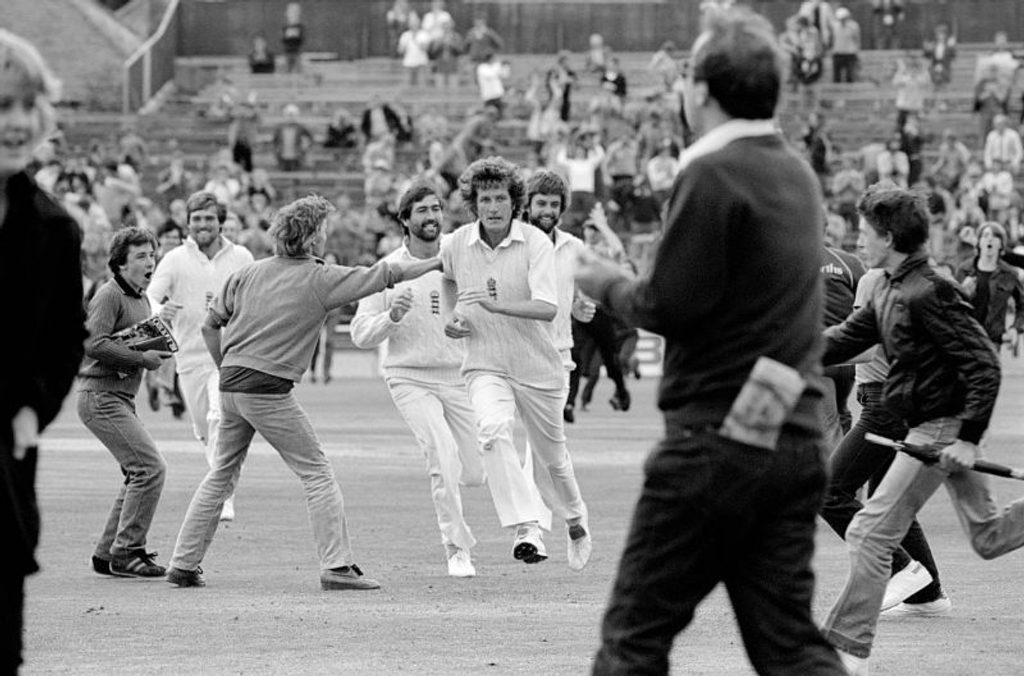 “He ‘of the big heart and vicious bounce’ in Martin-Jenkins’ words, came hurtling down the hill, in one of the most remarkable bowling performances in Test history.”
“He ‘of the big heart and vicious bounce’ in Martin-Jenkins’ words, came hurtling down the hill, in one of the most remarkable bowling performances in Test history.”
Before taking the field, Brearley gave a brief exhortatory speech to the team: “More aggression, more liveliness… They’re the ones who are nervous now.” And indeed, after play on Saturday, England’s wicket-keeper Bob Taylor had made his way to the Australian dressing room with his arms full of bats to be autographed, only to be dismissed irritably with: “Fuck off, you, with your fucking bats.” Not panicking exactly, but ‘something was happening here’, and they knew not what it was.
Little sign of nerves at the start of the Australian innings, though. Botham’s first ball was a long hop, his second a half-volley; Graham Wood hit both for four. Dilley’s first two overs went for 11. But in golden arm’s second over, Wood attempted an off-drive at another long-hop and Taylor completed a simple catch behind. Australia, 13-1, with their innings less than 10 minutes old.
Nothing much then happened for the next hour, when Willis bowled first change, up the hill and into the wind from the Football Stand end, in tandem with Chris Old. ‘”fter he had bowled five overs, Willis said to me ‘Give me a go at the other end’,” tells Brearley.
And that’s when it all changed. He ‘of the big heart and vicious bounce’ in Martin-Jenkins’ words, came hurtling down the hill, in one of the most remarkable bowling performances in Test history.
As Mike Gatting in Leading from the Front tells it: “We started off badly in their second innings. Willis had been bowling from the Football Stand End and was visibly worn out. ‘Let me have a go down the wind,’ he told the skipper. ‘I’m an old man now!’ And from the Kirkstall Lane End, ‘Goose’ started roaring in. Sending down an assortment of no-balls and snorters… bowling short and quite fearsomely. I remember thinking, standing at square-leg, thank goodness we’re not facing this.”
In 11 balls, “eyes fixed in a glare which must have been frightening in itself,” wrote Botham, Willis cut the head off the Australian innings. Chappell was the first to fall, deflecting a sharp bouncer with his glove in front of his head, Hughes edged another lifter low down to third slip, where Botham took the catch, then Yallop fended off another bouncer to short-leg. Three wickets for no runs. Australia 58-4 at lunch, the obdurate Dyson 29 not out.
Stock bowler no more. Restored to his role as leader of the attack, Willis found “hidden reserves of energy we thought he no longer possessed. Every time those long and delicate legs of his seemed about to buckle under the strain of giving everything he had, he came up with a wicket to send fresh life surging through his body,” observed Botham.
Border fell shortly after lunch for 0, bowled by a nip-backer from Old, and then Dyson, hooking at Willis, got the faintest of edges to Taylor behind the stumps. Australia 68-6. Still time for an unnerving twist or two in the tail. Marsh always a danger. Not this time. Rapped twice in succession on the upper thigh by Willis, he top-edged a hook to the next ball. It looked for a moment as if it was going for six before Dilley, steadying himself, took a fine catch in front of his face, just inside the boundary.
Lawson soon followed, caught Taylor bowled Willis, but then Lillee joined Bright and went some way to restoring Australia’s hopes, Bright batting ‘neatly’, in Willis’ words (neatly enough to take 10 off an over from Old), and Lillee flapping the rising ball over the slip cordon before chipping a drive to a rare full ball from Willis, as Gatting sprang forward in an unlikely swan-dive to grasp the catch just above the turf. Australia 110-9. Twenty to win. Botham took over from Old, and from his second ball, last man Alderman edged straight to Old at slip. Who dropped it. And then did so again to the fifth ball of the over. Had the wheels come off?
They hadn’t. Two balls later, it was all over, Willis emphatically yorking Bright before thrusting both arms skywards and running in a circle of celebration through cover, back to the umpire, and from there, straight through the exultant crowd to the pavilion.
The miracle of Headingley, only the second team to pull off a win after being asked to follow on, and the first since a hung-over Bobby Peel had bowled the Australians out on a Sydney gluepot in 1894/95.
Idiot Wind
In the immediate aftermath, Willis, son of a BBC news correspondent and himself the future hanging judge in Sky’s studio, rather than revelling in the moment, took the opportunity, in that death-stare monotone of his, to paint the fourth estate kettle black.
The Headingley crowd didn’t care, though, and nor did a rapt nation watching and listening at home and, if they still had a job, at work. And while it was Botham who lit the touch-paper, it was Willis who fuelled the conflagration that reduced Australia to ashes. Remarkable to think that, as John Woodcock reflected that evening, “when play started yesterday the chances seemed to be that Willis was playing in his last Test match.”
During the five days at Headingley, by Labour’s count, another 30,000 lost their livelihoods. On July 27, a second wave of rioting broke out in Toxteth. On July 29, the Union Jacks came out for the Royal couple. Mixed up confusion still reigned, ‘every thing a little upside down’, as the man from Minnesota would have it. But just for a moment, the glum man from Sunderland, by way of Surrey, managed, in all his ‘raging glory’, to send ‘a light come shining’ through the gloom.








